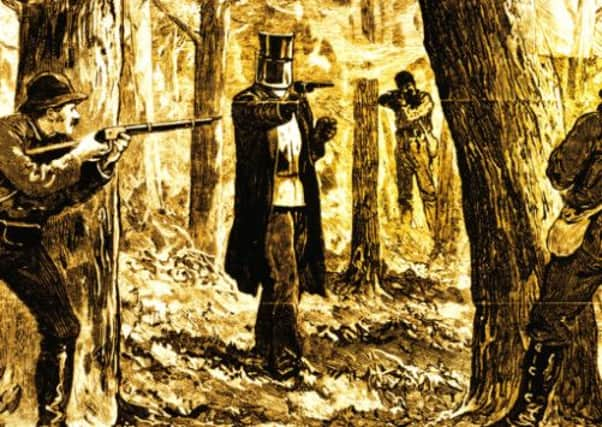Scot’s diary ties Ned Kelly to Caithness inn


Now, the dramatic eyewitness account by Caithness-born Donald Gray Sutherland has been donated to a museum in Melbourne, Victoria, shedding new light on the murderer’s last stand.
Sutherland sent the letter, along with a 230-page diary detailing his two-month voyage, to his parents in Mybster so that villagers in the Caithness community could gather at an inn to hear of his travels.
Advertisement
Hide AdAdvertisement
Hide AdThe letter tells how armoured Kelly was cornered at Glenrowan, 115 miles north east of Melbourne, in 1880. It also reveals that a fire that claimed the lives of Kelly’s gang members – his brother Dan and Steve Hart – left their bodies “roasted to a skeleton, black and grim”.
The Scot set sail first class for Australia in 1876 when he was 24 and worked at the Bank of Victoria in Oxley. He was married for a short time before his death at age 36.
Kelly, the son of an Irishman, became an icon of Australian folklore – feared by many, but loved by others, particularly the poor and deprived who saw him as a symbol of hope by challenging authority.
His gang rampaged across Victoria during Sutherland’s early years in Australia. In April 1878, Kelly shot a police officer in the wrist, and his mother was jailed for aiding and abetting an attempted murder. The brothers went into hiding, and were joined by Joe Byrne and Hart.
On being warned the police were planning to track them down, the gang ambushed their camp and Kelly killed three officers. The gang then went on to raid several banks, taking hostages.
Of the final stand-off, Sutherland wrote: “Glenrowan is only eight miles from Oxley. I always thought the Kellys were in the ranges about here.
“On hearing of the affray, I at once proceeded to Glenrowan to have a look at the desperados who caused me so many dreams and sleepless nights.”
He added: “He (Kelly) was wounded in five or six places, only in the arms and legs – his body and head being encased in armour made from the mouldboards of a lot of ploughs.
Advertisement
Hide AdAdvertisement
Hide Ad“Ned’s armour alone weighed 97 pounds. The police thought he was a fiend seeing their rifle bullets merely sliding off him like hail. They were firing into him at about 10 yards in the grim light of the morning without the slightest effect. The force of the rifle bullets made him stagger when hit but it was only when they got him in the legs and arms he reluctantly fell exclaiming as he did so, ‘I am done, I am done’.”
Sutherland said the outlaw was a “very powerful” man but with a “soft, mild-looking face and eyes”.
“After his capture, he became very tame and conversed freely with those who knew him,” Sutherland wrote.
Police caught up with Kelly’s gang. Byrne was shot as he drank whisky in a bar, and Dan Kelly and Hart were tracked to their hideaway.
Sutherland said the house was set on fire and the “charred remains” of the pair were removed, adding: “They presented a horrible appearance being roasted to a skeleton, black and grim reminding me of Old Knick himself.
“Thousands of people thronged to Glenrowan. Not one of the crowd there had the courage to lift the white sheet off the charred remains until I came up and struck a match – it being dark – and pulling down the sheet exposed all that remained of the two daring murderous bush rangers.”
Kelly was hanged in Melbourne Gaol on 11 November, 1880. A cast of his head and his metal armour are on show at the building, which is now a museum.
The letter has been donated to the State Library of Victoria in Melbourne by Sutherland’s great great niece Janice Brook, a retired student welfare officer from Edinburgh.
Advertisement
Hide AdAdvertisement
Hide AdShe believes the letter and diary was sent to Caithness along with tail hair from Kelly’s horse, which has since been lost. Sutherland sent the diary of his voyage for “the amusement of the select parties who assemble round the Mybster Inn fireside during the long and weary winter evenings”, he wrote.
Brook said: “The letter should go somewhere where it will be looked after. Over the years it is getting more fragile and the more people look at it the more fragile it becomes.
“It sheds new light on the Ned Kelly episode. It does give new details that were maybe missing before.”
Dr Kevin Molloy, manuscripts librarian at the State Library of Victoria, said the letter was a “truly wonderful find” saying it added “a very human touch to events that were significant in the history of Victoria”.
Twitter: @AlistairMunro1